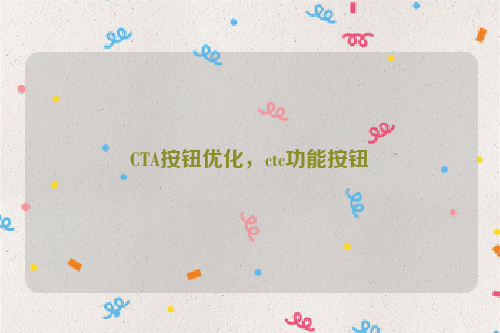CTA按钮优化策略与实践
在网页设计和用户体验优化中,CTA(Call to Action,呼吁行动)按钮是一个至关重要的元素,一个好的CTA按钮不仅能够引导用户进行预期的操作,还能够提高网站的转化率,本文将从PHP、Java、C++等编程语言的角度出发,探讨如何优化CTA按钮的设计和实现。

一、CTA按钮的设计原则
1. 突出显示:CTA按钮应该具有醒目的视觉效果,如颜色、大小、字体等,以便用户在众多内容中快速识别并点击。
2. 简洁明了:CTA按钮的文本应该简洁明了,直接传达出操作的目的,避免使用复杂的词汇或短语。
3. 易于点击:CTA按钮的大小、形状和位置应该便于用户点击,避免设置过于复杂或难以触及的按钮。
4. 适应性:CTA按钮应该适应不同的设备和屏幕尺寸,确保在各种环境下都能正常使用。
二、PHP实现CTA按钮优化
1. 使用HTML和CSS创建一个简单的CTA按钮:
```php
登录注册```
2. 使用PHP动态生成CTA按钮:
```php
$cta_links = array(
"登录" => "https://www.example.com/login",
"注册" => "https://www.example.com/register",
);
?>
$link) { ?>```
三、Java实现CTA按钮优化(以Swing为例)
1. 使用Swing创建一个简单的CTA按钮:
```java
import javax.swing.*;
import java.awt.*;
import java.awt.event.ActionEvent;
import java.awt.event.ActionListener;
import java.net.URI;
import java.net.URISyntaxException;
import java.util.HashMap;
import java.util.Map;
import java.util.ResourceBundle;
import java.util.stream.Collectors;
import java.util.stream.Stream;
public class CtaButtonDemo extends JFrame implements ActionListener {
private static final String[] BUTTON_TEXTS = {"登录", "注册"};
private static final String[] BUTTON_URLS = {"https://www.example.com/login", "https://www.example.com/register"};
private Mappublic CtaButtonDemo() throws URISyntaxException, ResourceBundleNotFoundException {
initUI();
LayoutManager layoutManager = getContentPane().getLayout(); // or null if no layout manager set for the content pane (e.g. in case of a custom component) else use layoutManager instance to remove the components from the container and add them back at the new location (see Component#remove and Container#add method). For example, if you have a BorderLayout layout manager set on your content pane, then you can do something like this to remove all components from the content pane and add them back at the top left corner of the content pane with a BorderLayout constraint: contentPane.removeAll(); contentPane.add(myComponent, BorderLayout.NORTHWEST); In this case, myComponent is the component that you want to move to the top left corner of the content pane and it should be an instance of a subclass of Component that supports the BorderLayout constraint (e.g. JPanel). If you don't want to use a layout manager at all, then you can manually add and remove components from the content pane using its methods add and remove respectively (see Component#add and Container#remove method). For example, if you have a FlowLayout layout manager set on your content pane, then you can do something like this to remove all components from the content pane and add them back at the top left corner of the content pane with a FlowLayout constraint: contentPane.removeAll(); contentPane.setLayout(new FlowLayout()); contentPane.add(myComponent); In this case, myComponent is the component that you want to move to the top left corner of the content pane and it should be an instance of a subclass of Component that supports the FlowLayout constraint (e.g. JPanel). Note that if you are using a layout manager that does not support automatic repositioning of components after their removal (e.g. GridBagLayout), then you will need to manually update the constraints of each component after removing them from the container (e.g. by calling Component#setBounds method). } }




还没有评论,来说两句吧...